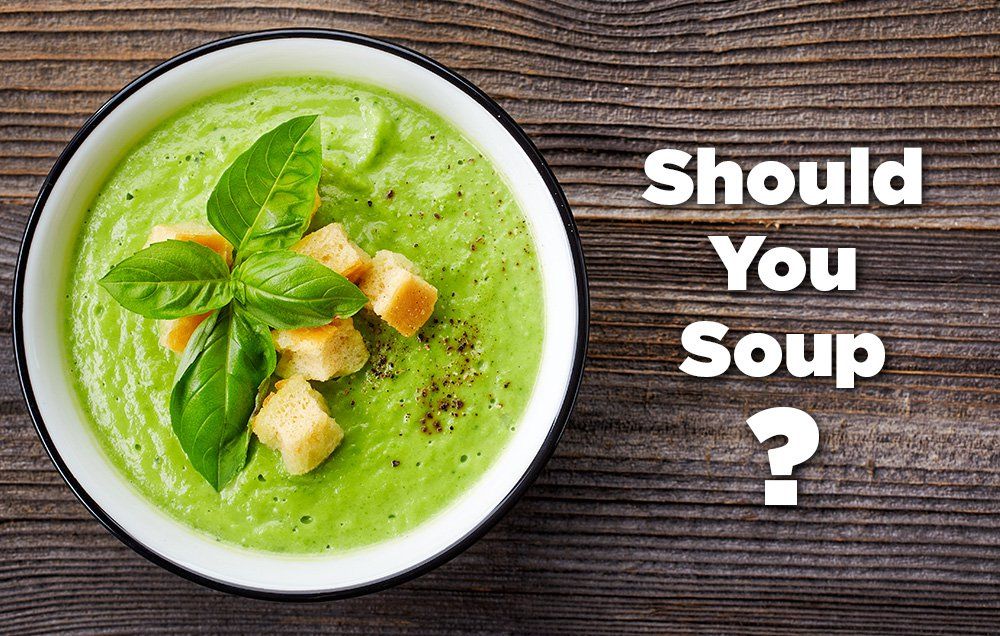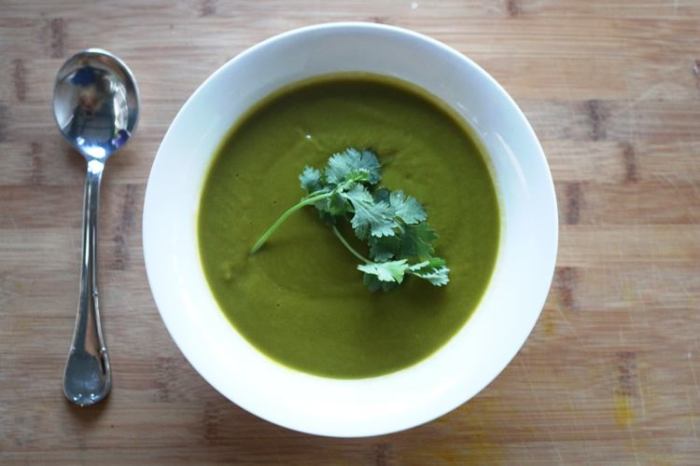Understanding Soup Cleanse Recipes
Soup cleanse recipe – Soup cleanses, while popular, are interpreted in various ways. Some view them as short-term dietary interventions to promote weight loss or detoxification, while others see them as a means to improve gut health or increase vegetable intake. Understanding these diverse perspectives is crucial before embarking on a soup cleanse.
Interpretations of Soup Cleanses
The term “soup cleanse” encompasses a wide range of dietary approaches. Some focus on low-calorie vegetable broths, aiming for rapid weight loss. Others emphasize nutrient-dense vegetable soups, prioritizing overall health and well-being. Still others incorporate specific ingredients believed to possess detoxifying properties. The common thread is the restriction of dietary intake to primarily soups for a defined period.
Common Ingredients in Soup Cleanses
Common ingredients vary widely depending on the cleanse’s goals. Vegetable-based cleanses often include leafy greens (kale, spinach), root vegetables (carrots, beets, sweet potatoes), and legumes (lentils, beans). Broth-based cleanses may feature bone broth, vegetable broth, or a combination, sometimes with added herbs and spices for flavor and purported health benefits.
Comparison of Soup Cleanse Types
Vegetable-based cleanses tend to be higher in fiber and micronutrients, promoting satiety and digestive health. Broth-based cleanses, particularly bone broth, can be rich in collagen and minerals, potentially supporting joint health and gut lining repair. However, both types can lack essential nutrients if not carefully planned.
Potential Health Benefits and Risks
Potential benefits may include short-term weight loss, improved digestion due to increased fiber intake (in vegetable-based cleanses), and a temporary increase in vegetable consumption. However, risks include nutrient deficiencies, electrolyte imbalances, and the potential for unsustainable long-term weight management. Individual needs and health conditions should always be considered before undertaking a soup cleanse.
Recipe Components and Variations
Designing a successful soup cleanse recipe requires careful consideration of nutritional balance and individual dietary needs. The following examples illustrate diverse approaches to creating effective and palatable soup cleanse recipes.
Sample Vegetable Broth-Based Soup Cleanse Recipe
This recipe focuses on a simple, easily digestible vegetable broth base. It’s easily adaptable to various dietary restrictions.
- Ingredients: 8 cups low-sodium vegetable broth, 1 cup chopped carrots, 1 cup chopped celery, 1 cup chopped zucchini, ½ cup chopped onion, herbs (parsley, thyme).
- Instructions: Simmer vegetables in broth until tender. Season with herbs.
Nutrient-Diverse Vegetable Soup Cleanse Recipe
This recipe emphasizes a variety of vegetables for a broader range of vitamins and minerals.
- Ingredients: 6 cups vegetable broth, 1 cup chopped broccoli, ½ cup chopped cauliflower, ½ cup chopped bell peppers, ½ cup chopped mushrooms, ½ cup chopped kale, garlic, ginger.
- Instructions: Sauté garlic and ginger, then add vegetables and broth. Simmer until tender.
Low-Calorie, High-Fiber Soup Cleanse Recipe

Source: hearstapps.com
This recipe prioritizes fiber-rich vegetables for sustained satiety and minimal calories.
- Ingredients: 4 cups low-sodium vegetable broth, 1 cup chopped spinach, 1 cup chopped green beans, ½ cup chopped mushrooms, ½ cup lentils, spices (cumin, turmeric).
- Instructions: Simmer all ingredients until lentils are tender.
Adapting Recipes for Dietary Restrictions
Adapting recipes is straightforward. For vegetarian or vegan diets, ensure the broth is vegetable-based and avoid any animal products. For gluten-free diets, check all ingredients for gluten-containing additives. Always carefully review ingredient labels.
Preparation and Consumption
Preparing and consuming a soup cleanse requires a methodical approach to ensure both nutritional adequacy and enjoyment. Proper preparation and storage techniques are essential for maximizing the benefits of the cleanse.
Step-by-Step Preparation of a Basic Vegetable Soup Cleanse
- Chop vegetables into consistent sizes for even cooking.
- Sauté aromatics (onions, garlic) if desired.
- Add vegetables and broth to a pot and simmer until vegetables are tender.
- Season with herbs and spices to taste.
- Allow to cool before storing or consuming.
Essential Kitchen Tools and Equipment
Basic kitchen tools suffice: a large pot, cutting board, knife, measuring cups and spoons.
Storing and Reheating Leftover Soup, Soup cleanse recipe
Store leftover soup in airtight containers in the refrigerator for up to 3 days. Reheat gently on the stovetop or in the microwave, avoiding boiling.
Recommended Daily Intake and Serving Sizes
Daily intake and serving sizes should be tailored to individual caloric needs and preferences. Consulting a nutritionist or healthcare professional is recommended.
Nutritional Aspects and Benefits
The nutritional profile of a soup cleanse varies greatly depending on the ingredients used. Understanding this variability is key to assessing potential benefits and risks.
Nutritional Content of a Typical Soup Cleanse
A typical vegetable-based soup cleanse might be rich in vitamins A, C, and K, as well as fiber and various minerals. However, it may be deficient in protein and certain essential fats if not carefully planned.
Impact on Digestion and Detoxification
The increased fiber content in many soup cleanses can promote regular bowel movements and improve digestive regularity. The purported detoxification effects are largely anecdotal and lack robust scientific evidence.
Nutritional Value Compared to a Regular Diet
A soup cleanse, while potentially beneficial for short-term dietary changes, cannot replace a balanced diet in the long term. A balanced diet provides a broader range of essential nutrients.
Soup cleanse recipes often emphasize simplicity, focusing on nutrient-rich broths and vegetables. If you’re new to this type of cleansing, starting with foundational recipes is key; for inspiration, check out this collection of simple and easy soup recipes to build your confidence. Then, you can gradually incorporate more complex soup cleanse recipes as you refine your preferences and techniques.
Potential Side Effects and Precautions

Source: liveenergized.com
Potential side effects include fatigue, headaches, and digestive upset. Individuals with underlying health conditions should consult a healthcare professional before undertaking a soup cleanse.
Recipe Presentation and Visual Aids
Presenting soup cleanse recipes in an organized and visually appealing manner enhances their appeal and practicality.
Table of Soup Cleanse Recipes
| Recipe Name | Key Ingredients | Calorie Count (approx.) | Preparation Time |
|---|---|---|---|
| Basic Vegetable Broth | Vegetable broth, carrots, celery, zucchini | 150-200 | 30 minutes |
| Nutrient-Rich Vegetable Soup | Vegetable broth, broccoli, cauliflower, bell peppers | 200-250 | 45 minutes |
| Low-Calorie, High-Fiber Soup | Vegetable broth, spinach, green beans, lentils | 100-150 | 1 hour |
| Spicy Tomato & Lentil Soup | Tomato broth, lentils, spinach, chili flakes | 180-220 | 40 minutes |
Visual Representation of a Soup Cleanse Bowl
Imagine a vibrant bowl filled with a medley of colors: the deep green of spinach contrasting with the bright orange of carrots, the earthy brown of lentils, and the vibrant red of diced tomatoes. The textures are diverse, from the soft, yielding vegetables to the hearty lentils. A sprinkle of fresh parsley adds a pop of green and a touch of freshness.
The steam rising from the bowl hints at its warmth and comforting nature.
Step-by-Step Visual Guide (Descriptive Text Only)
Step 1: Begin by finely chopping the vegetables, ensuring consistent sizes for even cooking. Step 2: Sauté onions and garlic in a pot until fragrant. Step 3: Add the chopped vegetables and vegetable broth to the pot. Step 4: Bring the mixture to a boil, then reduce heat and simmer until vegetables are tender. Step 5: Season with herbs and spices to taste.
Step 6: Ladle the soup into bowls and garnish as desired.
Questions Often Asked
How long should I do a soup cleanse?
The duration of a soup cleanse varies, but it’s generally recommended to keep it to a short period, such as 3-7 days. Longer durations should be discussed with a healthcare professional.
Can I exercise while on a soup cleanse?
Gentle exercise is generally fine, but avoid strenuous activity, especially in the initial days. Listen to your body and adjust accordingly.
What if I get hungry during a soup cleanse?
Drink plenty of water and herbal teas. The fiber in the soup should help you feel full, but if you experience significant hunger, adjust your portion sizes or add a small, healthy snack.
Are there any potential side effects?
Some individuals may experience mild side effects such as headaches, fatigue, or digestive discomfort, particularly in the initial days. These are usually temporary. Consult your doctor if you experience severe or persistent side effects.
